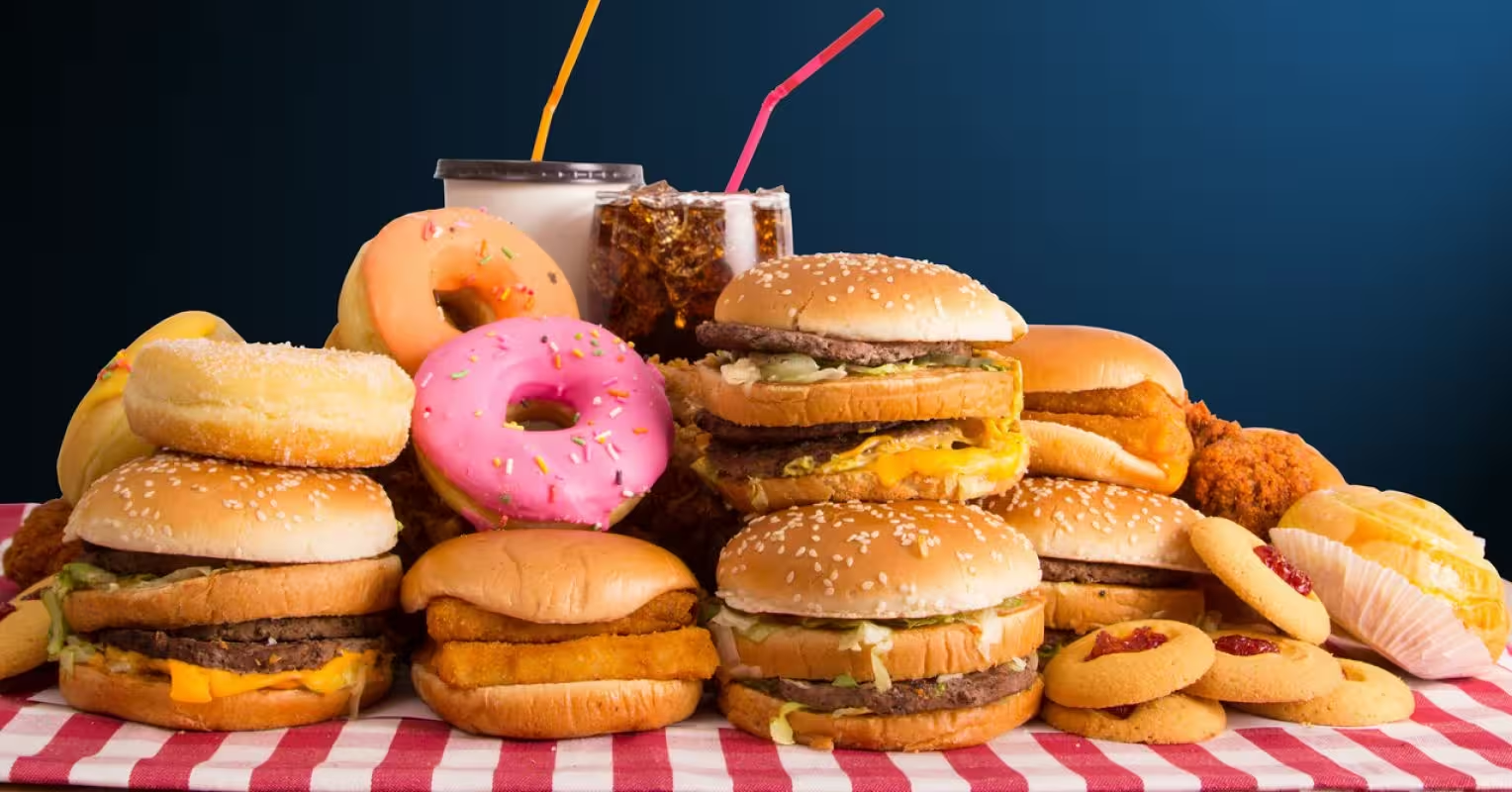7 Minutes
Middle-aged adults—especially women in their 50s—are experiencing unusually high rates of addiction-like responses to ultra-processed foods. New analysis of nationally representative survey data indicates that the first cohorts raised amid a food system dominated by engineered convenience products show persistent patterns consistent with clinical definitions of addiction. These findings have implications for public health messaging, clinical screening, and prevention strategies.
The processed-food generation and generational differences
The term "ultra-processed foods" refers to industrial formulations designed to be highly palatable and convenient—sweets, fast food, sweetened beverages, microwaveable meals and many packaged "diet" snacks. These products are often formulated with combinations of sugar, fat, salt, refined carbohydrates and artificial flavors that increase reward value and promote repeated consumption.
Researchers at the University of Michigan used survey data from the U-M National Poll on Healthy Aging to explore how exposure across the life course relates to addiction-like responses. Their analysis covered more than 2,000 older Americans and highlights striking generational differences. Among adults now in their 50s and early 60s—people who grew up when ultra-processed products became ubiquitous—about 21% of women and 10% of men met the study's criteria for addiction to ultra-processed foods. By contrast, in those aged 65 to 80, only about 12% of women and 4% of men met the same thresholds.
These contrasts suggest a cohort effect: Generation X and the younger Baby Boomers were the first to spend formative years immersed in a processed-food environment and in intense marketing campaigns that included a wave of low-fat, convenience-focused products promoted especially to women during the 1980s and 1990s. That early exposure may have long-term consequences for reward-driven eating patterns.

How researchers measured addictive eating
Clinical criteria adapted for food
To quantify addiction-like eating, investigators applied the modified Yale Food Addiction Scale 2.0 (mYFAS 2.0), a standardized instrument adapted from diagnostic criteria for substance use disorders. The mYFAS asks about 13 experiences with highly rewarding foods—intense cravings, inability to cut down despite intent, withdrawal-like symptoms, use despite negative consequences, and avoidance of social situations because of eating concerns.
Although foods are not pharmacologically identical to substances such as alcohol or nicotine, the scale operationalizes behavioral and psychological signs that mirror substance-related disorders. Using these criteria, the study identifies people who display clinically meaningful patterns of problematic consumption of ultra-processed items such as sugary drinks, fast-food meals, and engineered snack foods.
Survey sample and design
The results come from the University of Michigan National Poll on Healthy Aging, carried out through the U-M Institute for Healthcare Policy and Innovation with support from Michigan Medicine. The poll is nationally representative of older adults and enables researchers to correlate addiction indicators with self-reported physical and mental health, weight perception, and social variables.
Links to weight perception, health status, and social isolation
The analysis also examined associations between ultra-processed food addiction and factors that affect well-being. Key findings include:
- Weight self-perception: Respondents who described themselves as overweight had markedly higher odds of meeting addiction criteria. Across age groups, roughly one-third of women who said they were overweight met the threshold; men reporting overweight also showed elevated rates. In relative terms, the study reported much higher likelihoods of addiction among those who perceived themselves as overweight.
- Mental and physical health: Participants who rated their mental health as fair or poor were several times more likely to meet addiction criteria. Poor physical health was also associated with greater odds of problematic use of ultra-processed foods.
- Social isolation: People who reported feeling isolated some or most of the time were more than three times as likely to meet the scale's criteria compared with those who did not report isolation.
The researchers note a reciprocal relationship is plausible: ultra-processed foods may contribute to weight gain and chronic disease risk, while social and mental health challenges can increase reliance on highly palatable convenience foods. Furthermore, many of these products are marketed as "health-washed"—low fat, "light," or fortified—potentially misleading people who are trying to manage weight into consuming items that reinforce craving and overconsumption.
Public health implications and future risk
The cohorts now in middle age were raised during a shift in the national food environment: supermarkets and vending options proliferated with engineered convenience foods, and mass marketing normalized their consumption. With children and adolescents today consuming even larger shares of calories from ultra-processed sources, researchers warn that future older populations might show higher lifetime prevalence of addiction-like eating patterns.
Because consumption of ultra-processed foods is linked with cardiometabolic disease and premature mortality in other research, addiction-like patterns raise concerns for long-term population health. The study's senior author emphasized the need to consider not only nutritional content but also how product design and marketing shape behavior across the life course.
Health systems and clinicians may need new screening tools and interventions that recognize compulsive or loss-of-control eating tied to ultra-processed foods. Prevention efforts targeted at critical developmental windows—childhood and adolescence—could be essential to reducing lifetime risk.
Expert Insight
"We are observing a pattern that is familiar from other public-health challenges: environmental exposure combined with targeted marketing can create lifelong vulnerabilities," said Dr. Maya R. Santos, a public health nutritionist and lecturer in behavioral nutrition. "From a prevention standpoint, policies that limit children's exposure to highly engineered foods and regulate deceptive 'health' claims could reduce the number of people who develop these addiction-like behaviors by midlife. Clinicians should also be aware that a patient's weight perception and social isolation are not just background factors; they often interact with how people eat."
"This research highlights the need for multidisciplinary responses—nutrition policy, behavioral therapy, and community supports—to address the complex drivers of compulsive eating related to ultra-processed products," Dr. Santos added.
Conclusion
The University of Michigan analysis spotlights a growing public-health challenge: adults who grew up in a food landscape built around ultra-processed products are showing higher rates of addiction-like eating, particularly women now in their 50s. Measured with the modified Yale Food Addiction Scale 2.0, these patterns correlate with poorer self-reported mental and physical health, weight perception, and social isolation. With younger generations consuming proportionally more ultra-processed calories, the study raises urgent questions about prevention, clinical screening, and policy interventions to limit future harm.
Policymakers, clinicians, and communities should consider how product design, marketing, and social determinants of health combine to shape long-term eating behavior. Early interventions—both educational and regulatory—may be crucial to reducing the lifetime burden of ultra-processed food addiction and its downstream health effects.
Source: scitechdaily


Leave a Comment